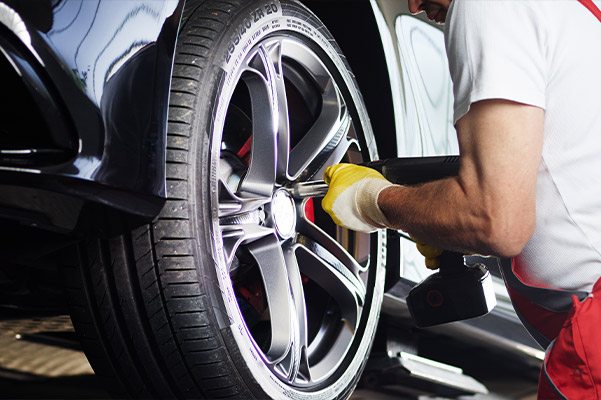Tire Solution: The Impact of Weather Problems
When it comes to making certain ideal performance and safety on the road, understanding the impact of weather problems on tire service is essential. GMC Tire Service. In this conversation, we will explore the intricate relationship in between weather condition problems and tire service, dropping light on the significance of weather-specific tire upkeep practices and factors to consider.
Heat and Tire Performance
When revealed to high temperatures, tires experience adjustments in efficiency that can considerably affect lorry safety and handling. The heat created from long term driving or hot weather problems creates the tire rubber to soften, bring about minimized walk life and increased wear. As the rubber becomes softer, the tire's hold on the roadway decreases, impacting braking ranges and overall grip. In severe instances, extreme warm can also create tire blowouts, posturing an extreme security threat to the car and its residents.

Winter Effects
Cold climate problems can have a considerable effect on tire efficiency and security. As temperatures decrease, tire rubber can set, bring about reduced grip on icy or snow-covered roads. In chilly weather condition, tires may likewise lose atmospheric pressure extra swiftly, which can affect taking care of and fuel efficiency. Furthermore, cold temperatures can trigger tire sidewalls to stiffen, enhancing the threat of damages from pits or various other road risks.
To minimize the effects of winter on tires, it is essential to routinely inspect tire pressure and inflate them to the producer's suggested degrees. Making use of wintertime or all-season tires made for chilly climate conditions can likewise enhance grip and grasp on icy or snowy roads. Proper tire maintenance, consisting of regular evaluations for wear and damages, ends up being even a lot more critical throughout cooler months to ensure optimal performance and security.
Rainy Issues Effect
Tires with worn-out treads are more vulnerable to hydroplaning, where a layer of water constructs up in between the road and the tire surface, leading to loss of grip. To fight this, vehicle drivers must consistently evaluate their tires for sufficient walk depth and take into consideration spending in tires particularly made for damp problems.
Additionally, rainy weather can likewise lower presence, making it testing for vehicle drivers to see the road in advance plainly (GMC Tire Service). In such problems, it is crucial to change driving speeds accordingly and maintain a safe adhering to range to allow for unexpected quits. Correctly filled with air tires can likewise aid in preserving control on wet roadways by offering better handling and grasp
Snow and Tire Security
When driving in snowy conditions, having the ideal tires can make a substantial difference in safety and security and performance. Winter months tires are developed with unique rubber substances and walk patterns to give better grip on snow and ice compared to all-season tires.

It is important to follow supplier instructions when using and installing tire chains to avoid damage to the tires and car. By selecting the ideal tires, visit our website keeping correct rising cost of living, and thinking about extra traction help like tire chains, motorists can enhance their safety and security when navigating snow-covered roads.
Weather-Related Tire Upkeep
Weather-related tire maintenance includes a range of methods intended at making sure optimal tire function and long life in different climate scenarios. One crucial aspect of weather-related tire maintenance is tire stress guideline. Checking tire tread on a regular basis and replacing tires when tread wear gets to a certain depth is essential for preserving traction and stability in unfavorable weather.
Final Thought
Finally, weather condition problems have a substantial influence on tire efficiency and security. From warmth influencing tire pressure and use to winter minimizing traction, it is important to take into consideration the climate when preserving and utilizing tires. Wet problems can decrease grip and lead to hydroplaning, while snow can raise the risk of accidents if tires are not appropriately furnished. Weather-related tire maintenance is essential in making certain optimum efficiency and safety when driving.
In this conversation, we will certainly discover the elaborate partnership between climate conditions and tire service, losing light on the relevance of weather-specific tire maintenance methods and factors to consider.
